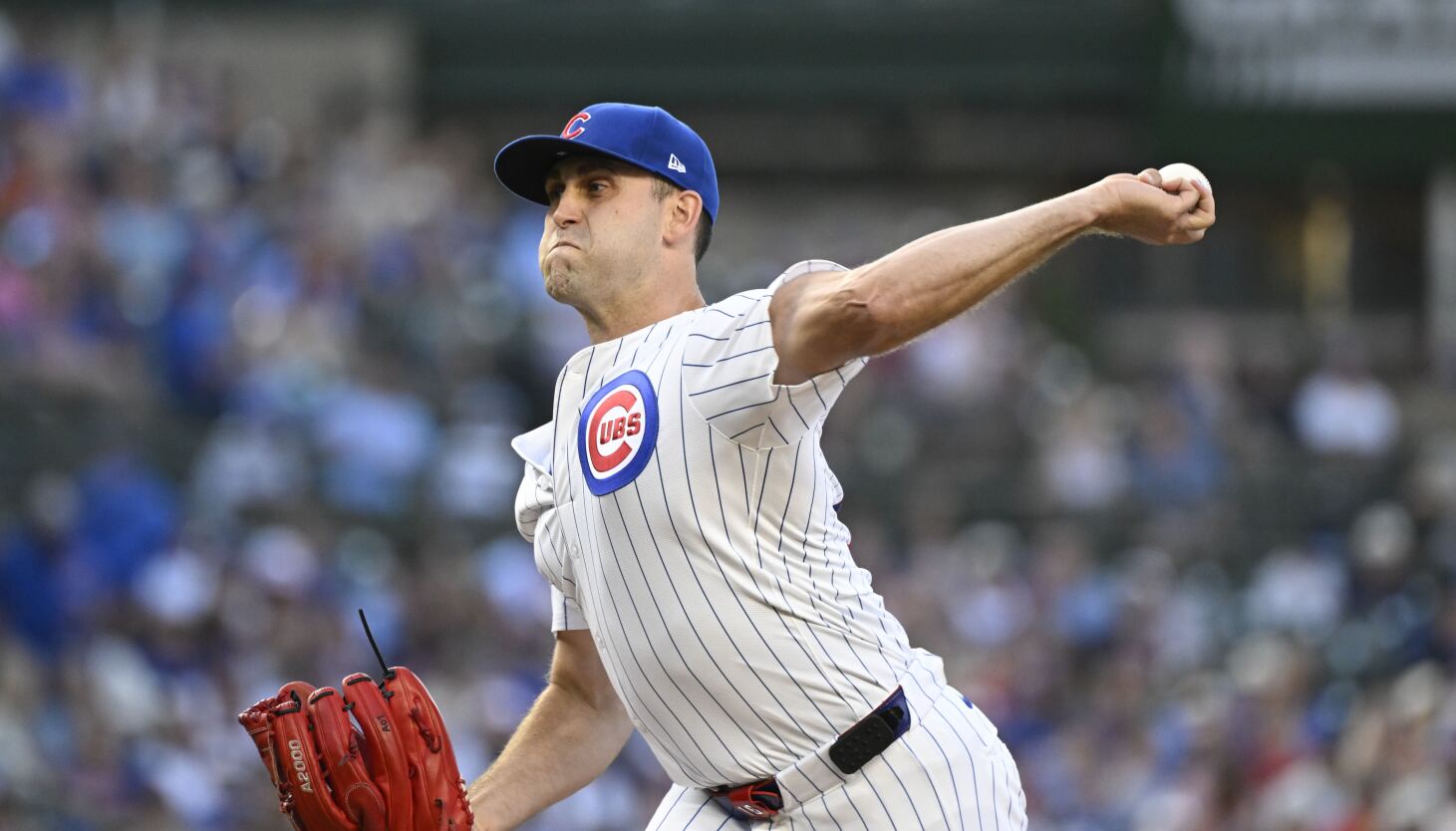The Cubs wouldn’t have offered Matthew Boyd a two-year, $29 million contract if they weren’t confident that he had strong potential going into his first full season coming out of Tommy John surgery.
The tricky part was, however, they only had 11 major-league games with the Guardians, spanning the last month and a half of the regular season and a playoff run into the American League Championship Series, to make that determination.
“You never know exactly. It was a little bit of an unusual background,” Cubs president of baseball operations Jed Hoyer said, alluding to Boyd’s injury history. “And so, he probably exceeded expectations for us, which is a great thing to be able to say at this time of year.”
Boyd entered his start Tuesday against the Guardians with the sixth-best ERA (2.65) among qualified National League starting pitchers. He’s become a stopper for the Cubs, reliably turning in skid-halting performances in the absence of Justin Steele (season-ending elbow surgery) and Shota Imanga (strained left hamstring.)
Imanaga’s return from the IL last week is expected to give the Cubs a boost going forward. But Boyd outperforming expectations will also factor into the Cubs’ calculations as they survey the trade market over the next month, leading up to the July 31 trade deadline.
“You’re looking to acquire depth,” Hoyer said. “You’re going to have injuries in the second half, and you have to be able to address those. But also looking to raise our replacement level and raise our talent level, and that’s really the challenge. Acquiring guys that provide depth, I know we can do that. The question of, can we find guys that are better than our current alternatives – and that’s how you actually get better as a team – that’s a little bit more difficult.”
The Cubs’ most obvious need is pitching. And the rotation’s recent slump highlighted the importance of raising the floor for that group at the deadline.
In the span of less than a week, Colin Rea, Ben Brown (who was optioned to Triple-A to make room in the rotation for Imanaga’s return), Jameson Taillon and Cade Horton recorded some of their worst starts of the year, each allowing at least seven earned runs in series against the Mariners, Cardinals and Astros.
Cue Boyd. His six scoreless innings against the Cardinals paved the way for an 8-0 victory that ended the Cubs’ three-game losing streak.
“Nobody goes through the ups and downs of injuries year after year, after year, and not learn a lot about yourself,” pitching coach Tommy Hottovy said last week. “Not only as a pitcher, but as a person, what you can control, what you can’t control. I think he’s done a fantastic job of knowing what he can control and not worrying about any of the other stuff.”
Hottovy emphasized the compounding effects of having multiple “stoppers” in the rotation. In addition to Boyd, Imanaga has been in that category since he joined the Cubs last year. Taillon hit a two-start rough patch in mid-June, but when he’s on a roll, he has the same ability.
A team looking to make a deep run in the playoffs, however, needs as much quality starting pitching as it can get. The Cubs came into the year imagining Steele at the top of the rotation too. Their approach to the deadline will have to take into account his absence.
“You never have enough pitching depth,” Hoyer said. “We’ve had a lot of conversations with teams, we’ll continue to have a lot of conversations. But these things ramp up, they just take a little break at draft time, and then they ramp up again after that. So when it comes to acquiring depth, we’re on the lookout, we’re talking, but with realization that these things usually trend towards late July.”
